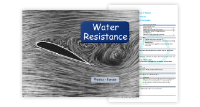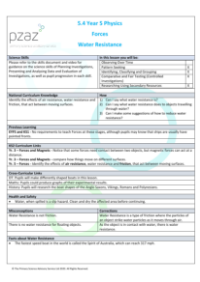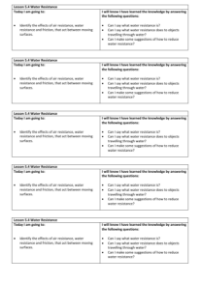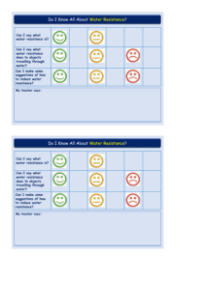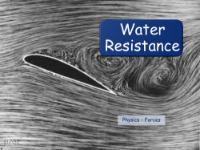Water Resistance - Teacher Explanation

Science Resource Description
Welcome to Lesson 5.4 on Water Resistance, part of the Year 5 Forces Unit in the National Curriculum. This lesson is crucial as it helps pupils understand the effects of water resistance, along with air resistance and friction, especially from a health and safety perspective. When conducting experiments involving water, it's important to promptly mop up any spills to prevent accidents. This lesson offers a hands-on approach, where pupils will get creative by making different boat shapes, linking the activity with Design and Technology. Moreover, the lesson provides an opportunity to integrate learning with other subjects like Maths, through graphing experimental results, and History, by researching historical boat designs from various cultures such as the Anglo Saxons, Vikings, Romans, and Polynesians.
Diving into the experiment, pupils will test various boat shapes to observe how each design affects water resistance. They'll need materials like stopwatches, cardboard, foil, scissors, straws, tape, and water to set up their experiments. Instructions are provided on how to create a foil trough and prepare it for the activity, ensuring minimal mess and easy clean-up. The experiment will involve blowing boats across water to measure their speed and deduce the impact of their shapes on water resistance. Pupils will work in pairs, recording their findings, and later, they'll expand their learning by researching and presenting on the evolution of watercraft shapes in a PowerPoint presentation. The lesson also includes an exciting 'quickest submarine' activity, where pupils race different shapes in water to see which is the most hydrodynamic. This hands-on approach not only makes the concept of water resistance tangible but also encourages critical thinking and scientific inquiry among pupils.

